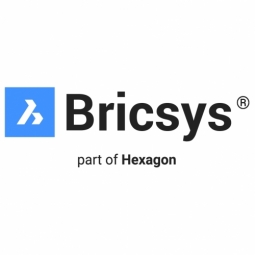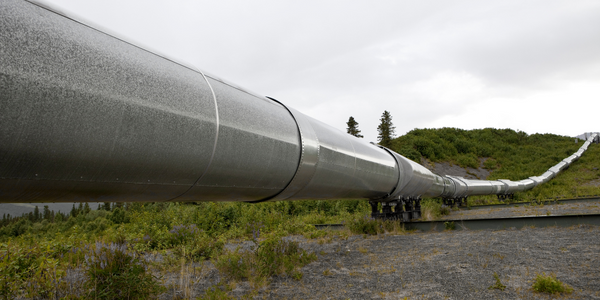Leveraging BricsCAD BIM and CADWorx for Efficient Plant Design: A Case Study on The Fourth Research and Design Engineering Corporation of CNNC

Technology Category
- Sensors - Chemical Sensors
- Sensors - Liquid Detection Sensors
Applicable Industries
- Oil & Gas
- Pharmaceuticals
Applicable Functions
- Product Research & Development
- Quality Assurance
Use Cases
- Virtual Prototyping & Product Testing
- Visual Quality Detection
Services
- System Integration
- Testing & Certification
About The Customer
The Fourth Research and Design Engineering Corporation of CNNC is the most extensive research and design unit of the CNNC and the first and largest metallurgical design unit established by New China. It includes the Pharmaceutical and Chemical Research and Design Institute Department that focuses on the entire industrial chain of pharmaceutical and chemical projects. The corporation is one of the four state-owned design institutes in the pharmaceutical and chemical industry, with projects covering 31 provinces, cities, and autonomous regions. The department's business scope covers engineering consulting, design, management, and technology development.
The Challenge
The Fourth Research and Design Engineering Corporation of CNNC, a leading metallurgical design unit in China, was facing challenges with its 3D design process. The corporation, which includes the Pharmaceutical and Chemical Research and Design Institute Department, was struggling with the integration of Building Information Modeling (BIM) and Plant software for complex 3D pipeline designs. The department's previous BIM software was not compatible with the necessary Plant solutions, causing difficulties in professional collaboration and significantly increasing the workload in the post-design period. The department's business scope covers engineering consulting, design, management, and technology development, with projects spanning 31 provinces, cities, and autonomous regions. The complexity and breadth of these projects necessitated a more efficient and collaborative design process.
The Solution
To address these challenges, the corporation switched to BricsCAD BIM combined with CADWorx, a design software by Hexagon that offers tools for efficient Plant Design. BricsCAD BIM allowed the corporation to integrate all 3D designs within a single platform, providing good compatibility, permanent licensing, and world-class technical support. The software also enabled multi-disciplinary collaborative design of process piping, architecture, structure, HVAC, water supply drainage, and electricity. Furthermore, it integrated the CADWorx module to complete the process of pipeline modeling, effectively bridging the gap between BIM and Plant. This solution was particularly well-suited to the needs of the pharmaceutical and chemical industry, filling a significant industry vacancy.
Operational Impact
Quantitative Benefit

Case Study missing?
Start adding your own!
Register with your work email and create a new case study profile for your business.
Related Case Studies.

Case Study
Case Study: Pfizer
Pfizer’s high-performance computing software and systems for worldwide research and development support large-scale data analysis, research projects, clinical analytics, and modeling. Pfizer’s computing services are used across the spectrum of research and development efforts, from the deep biological understanding of disease to the design of safe, efficacious therapeutic agents.

Case Study
Taking Oil and Gas Exploration to the Next Level
DownUnder GeoSolutions (DUG) wanted to increase computing performance by 5 to 10 times to improve seismic processing. The solution must build on current architecture software investments without sacrificing existing software and scale computing without scaling IT infrastructure costs.

Case Study
Remote Wellhead Monitoring
Each wellhead was equipped with various sensors and meters that needed to be monitored and controlled from a central HMI, often miles away from the assets in the field. Redundant solar and wind generators were installed at each wellhead to support the electrical needs of the pumpstations, temperature meters, cameras, and cellular modules. In addition to asset management and remote control capabilities, data logging for remote surveillance and alarm notifications was a key demand from the customer. Terra Ferma’s solution needed to be power efficient, reliable, and capable of supporting high-bandwidth data-feeds. They needed a multi-link cellular connection to a central server that sustained reliable and redundant monitoring and control of flow meters, temperature sensors, power supply, and event-logging; including video and image files. This open-standard network needed to interface with the existing SCADA and proprietary network management software.

Case Study
Refinery Saves Over $700,000 with Smart Wireless
One of the largest petroleum refineries in the world is equipped to refine various types of crude oil and manufacture various grades of fuel from motor gasoline to Aviation Turbine Fuel. Due to wear and tear, eight hydrogen valves in each refinery were leaking, and each cost $1800 per ton of hydrogen vented. The plant also had leakage on nearly 30 flare control hydrocarbon valves. The refinery wanted a continuous, online monitoring system that could catch leaks early, minimize hydrogen and hydrocarbon production losses, and improve safety for maintenance.








